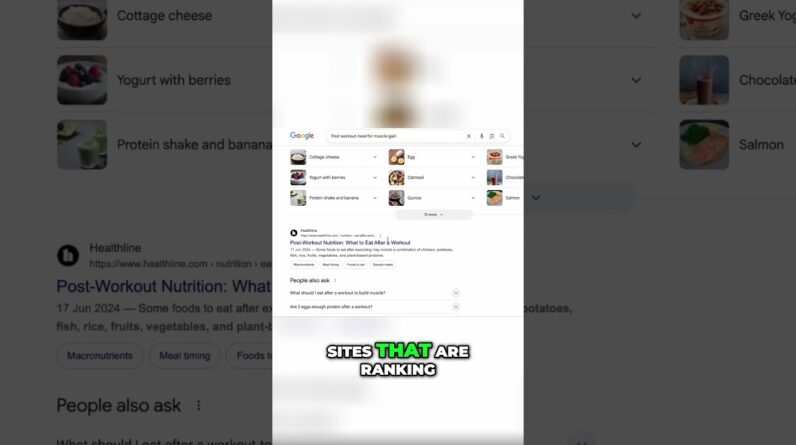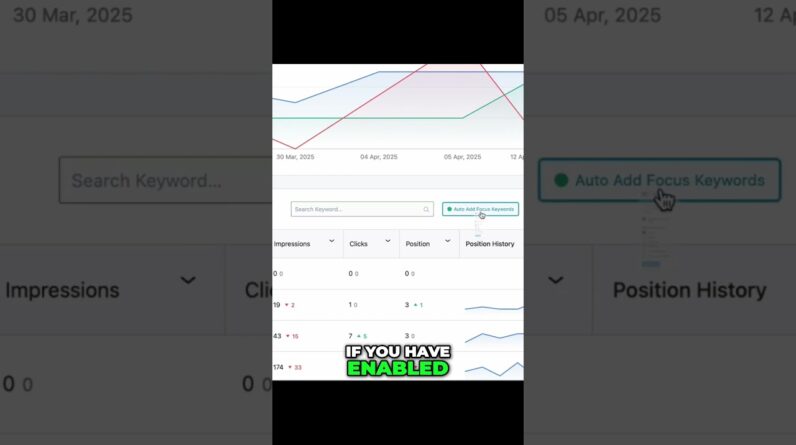
If you’re looking to boost your website’s visibility on search engines like Google, improving your site’s on-page SEO is key. By optimizing various elements of your webpage, such as your headings, meta tags, and content, you can enhance your website’s relevance and increase its chances of ranking higher in search results. In this article, you’ll discover practical tips and techniques to improve your site’s on-page SEO, allowing you to attract more organic traffic and reach a wider audience online. So, buckle up and get ready to take your website to new heights!
Keyword Optimization
Keyword optimization is a crucial aspect of improving your on-page SEO. By researching relevant keywords, you can gain insights into what your audience is searching for and tailor your content accordingly. Start by using keyword research tools to identify popular and relevant keywords in your industry. Pay attention to both search volume and competition to find the best keywords to target.
Once you have identified your target keywords, it is important to strategically use them in your page titles. Page titles are the first thing that users see on search engine result pages, so they should accurately reflect the content of the page while incorporating your target keywords. Ensure that your page titles are concise, compelling, and relevant to both search engine algorithms and users.
Another aspect of keyword optimization is optimizing meta tags, specifically meta descriptions and meta keywords. The meta description is a brief summary of the page’s content that appears below the page title on search engine result pages. It should be unique, compelling, and incorporate keywords to entice users to click on your page. However, be careful not to overstuff keywords or make the description unreadable.
Integrating keywords in the URL structure is another way to optimize your website for search engines. A clear and concise URL structure can help search engines understand the content of your page and improve your website’s visibility in search results. Include your target keywords in the URL, separated by hyphens for word separation. This helps search engines and users better understand what your page is about.
Lastly, including keywords in headings and subheadings is essential for optimizing your content. Use proper heading tags (H1, H2, etc.) to structure your content and make it more readable for both users and search engines. Incorporate your target keywords naturally in headings and subheadings to emphasize their relevance and improve your on-page SEO.
Content Optimization
Creating high-quality, relevant content is the backbone of any successful SEO strategy. Search engines prioritize websites that provide valuable and engaging content to users, so it is important to focus on producing content that meets these criteria. Conduct thorough research on your topic to ensure that your content is accurate, informative, and useful to your target audience.
Properly structuring your content with headings and subheadings is another crucial aspect of content optimization. Headings not only break up your content and make it more readable, but they also help search engines understand the hierarchy and organization of your content. Use H1 tags for your main title and utilize H2 to H6 tags for subheadings, ensuring that you incorporate your target keywords in these tags to enhance their optimization.
Optimizing images and multimedia is also important for both user experience and SEO. Compress image file sizes to improve page load times, as slow-loading pages can negatively impact your SEO rankings. Use descriptive alt text for images to provide context to both users and search engines. Additionally, consider adding relevant file names and optimizing image captions to improve the overall optimization of your content.
Adding both internal and external links is an effective way to optimize your content. Internal linking allows users to navigate through your website easily while distributing authority and relevance throughout your site. Include links to relevant pages within your website to provide additional information or resources for users. External linking, on the other hand, involves linking to trustworthy and authoritative external sources to support your content. This can enhance the credibility of your content for both users and search engines.
Using schema markup is another content optimization technique that can improve your on-page SEO. Schema markup is a structured data vocabulary that helps search engines understand the content of your page more effectively. By implementing schema markup, you can provide search engines with additional information about your content, such as product details, event information, and ratings. This can enhance your website’s visibility in search results and attract more targeted traffic.
Technical SEO
Technical SEO involves optimizing various technical aspects of your website to improve its visibility and performance in search engine rankings. This optimization focuses on the backend of your website and is crucial for ensuring that search engines can properly crawl, index, and understand your site.
Optimizing site speed is a critical aspect of technical SEO. Users expect fast-loading websites, and search engines take website speed into consideration when determining rankings. There are several ways to improve site speed, such as optimizing image sizes, minifying CSS and JavaScript files, and leveraging browser caching. Regularly monitor your website’s speed using tools like Google PageSpeed Insights and make necessary improvements to achieve optimal performance.
Ensuring mobile responsiveness is another important aspect of technical SEO. With the increasing use of mobile devices for browsing, search engines prioritize mobile-friendly websites in their rankings. A responsive design allows your website to adapt to different screen sizes and ensures a seamless user experience across devices. Test your website’s mobile responsiveness using tools like Google’s Mobile-Friendly Test and make necessary adjustments to optimize its performance.
Fixing crawl errors is crucial for ensuring that search engines can properly crawl and index your website. Conduct regular audits using tools like Google Search Console to identify any crawl errors, such as broken links or pages blocked by robots.txt. Address these errors promptly, as they can negatively impact your website’s visibility in search results.
Creating XML sitemaps is another technical SEO technique that can improve your website’s visibility to search engines. XML sitemaps provide search engines with a roadmap of your website’s structure and help ensure that all pages are properly indexed. Generate XML sitemaps using tools like Yoast SEO or Google XML Sitemaps and submit them to search engines.
Implementing an SSL certificate is essential for technical SEO. SSL certificates encrypt the data transmitted between your website and its users, ensuring a secure browsing experience. Search engines prioritize websites with SSL certificates, and having one can positively impact your rankings. Obtain an SSL certificate from a trusted certificate authority (CA) and ensure that your website is configured to use HTTPS.
User Experience Optimization
Optimizing your website for a positive user experience is crucial for both user satisfaction and SEO. Search engines prioritize websites that provide a seamless and enjoyable experience for users, so it is important to focus on improving various aspects of user experience.
Improving page load times is a key aspect of user experience optimization. Website speed directly impacts user satisfaction, with users expecting fast-loading pages. Optimize your website’s performance by minimizing server response time, caching resources, and optimizing images. Regularly monitor your website’s performance using tools like Google PageSpeed Insights and make necessary improvements to enhance page load times.
Optimizing readability and formatting is another important aspect of user experience optimization. Ensure that your content is easy to read and understand by using proper formatting techniques. Use clear headings and subheadings to break up your content, incorporate bullet points and numbered lists to organize information, and use a legible font size and type. By optimizing readability, you can keep users engaged and encourage them to stay longer on your website.
Creating a clear website structure is essential for user experience optimization. Users should be able to easily navigate through your website and find the information they are looking for. Implement a logical hierarchy with well-organized menus and categories, and consider using breadcrumbs to provide additional navigation options. A clear and intuitive website structure not only improves user experience but also helps search engines understand your website’s content and structure.
Enhancing the mobile experience is crucial in today’s mobile-centric world. A significant portion of internet traffic comes from mobile devices, and search engines prioritize mobile-friendly websites. Ensure that your website is fully responsive and adapts seamlessly to different screen sizes and resolutions. Pay attention to touch elements, such as buttons and links, to ensure that they are easily clickable and user-friendly on mobile devices.
Implementing breadcrumbs can further enhance user experience and site navigation. Breadcrumbs are a trail of links that show users their current location within a website’s hierarchy. They allow users to easily backtrack or navigate to previous pages. Implement breadcrumbs on your website to improve user experience and provide additional navigation options.
URL Optimization
Optimizing your website’s URLs is an important aspect of on-page SEO. A well-optimized URL structure can help search engines understand the content of your page and improve your website’s visibility in search results.
Using descriptive URLs is crucial for both search engines and users. Descriptive URLs provide valuable information about the content of a page and make it easier for users to interpret the URL. Avoid using generic or randomly generated URLs and opt for URLs that accurately represent the content of the page. For example, instead of using “www.example.com/page1?id=123”, use “www.example.com/digital-marketing-tips”.
Including target keywords in URLs is another URL optimization technique. By incorporating relevant keywords in your URLs, you can signal to search engines what your page is about and improve its visibility in search results. However, be cautious not to overstuff keywords or make the URL excessively long and unreadable. Keep URLs concise, descriptive, and user-friendly.
Avoiding unnecessary parameters in URLs is essential for URL optimization. Parameters, such as session IDs or tracking codes, can create dynamic URLs that are not user-friendly and can negatively impact your SEO. Remove unnecessary parameters from your URLs or use URL rewriting techniques to create clean and search engine-friendly URLs.
Using hyphens for word separation in URLs is recommended for optimal readability and search engine optimization. Hyphens are seen as word separators by search engines, helping them better understand the individual words in your URLs. For example, use “www.example.com/seo-tips” instead of “www.example.com/seotips”, which can be harder to read and interpret.
Setting canonical URLs is important for avoiding duplicate content issues. Canonical URLs help search engines determine the preferred version of a page when there are multiple versions available. Implement canonical tags to indicate the original or preferred version of a page, ensuring that search engines index the correct version and avoid penalizing your website for duplicate content.
Meta Tag Optimization
Meta tag optimization plays a significant role in improving your website’s visibility in search engine result pages. These tags provide valuable information to search engines and users, so it is important to optimize them effectively.
Writing unique and compelling meta descriptions is crucial for attracting users to click on your page in search results. A well-crafted meta description summarizes the content of the page and entices users to visit your website. Ensure that each meta description is unique, relevant to the page’s content, and includes your target keywords. However, avoid overstuffing keywords or making the description overly promotional.
Optimizing meta titles is another important aspect of meta tag optimization. Meta titles are the clickable headlines that appear as the main text on search engine result pages. Each meta title should accurately represent the content of the page while incorporating your target keywords. Keep meta titles concise, descriptive, and compelling to attract users and improve your SEO rankings.
Using relevant meta tags can provide additional information about your content to search engines. Tags such as “author,” “publisher,” and “category” help search engines understand the context and structure of your content. Implement relevant meta tags to provide additional information and enhance your website’s visibility in search results.
Including target keywords in meta tags, such as meta descriptions and meta titles, can improve your website’s visibility for those specific keywords. Incorporate relevant keywords naturally in your meta tags to increase their optimization. However, avoid keyword stuffing or using irrelevant keywords that do not accurately represent the content of the page.
Optimizing image alt tags is another important aspect of meta tag optimization. Alt tags provide alternative text that describes the content of an image. Not only do alt tags help visually impaired users understand the images on your website, but they also provide valuable information to search engines. Include relevant keywords in alt tags, but ensure that the text accurately describes the image.
Header Tag Optimization
Header tag optimization is crucial for improving the structure and readability of your content, as well as optimizing your on-page SEO. By utilizing header tags effectively, you can help search engines and users better understand the hierarchy and relevance of your content.
Using the H1 tag for your main title is essential. The H1 tag represents the main headline of your page, and search engines use it to understand the overall topic of your content. Make sure that your H1 tag accurately reflects the content of the page and incorporates your target keywords. This will help improve your visibility in search results for those keywords.
Utilizing H2 to H6 tags for subheadings is important for organizing your content and improving readability. These tags help break up your content into smaller sections and allow users to scan through the page quickly. Incorporate your target keywords naturally in these subheadings to emphasize their relevance and optimize your content.
Including target keywords in heading tags is crucial for optimizing your on-page SEO. Incorporate relevant keywords naturally and strategically in your heading tags to improve the optimization of your content. However, avoid excessive and repetitive use of heading tags, as this can be seen as keyword stuffing and negatively impact your SEO rankings.
Properly structuring the heading hierarchy is essential for effective header tag optimization. Use heading tags in a hierarchical order, starting with H1 for the main title and moving down to H2, H3, and so on for subheadings. This helps search engines and users understand the organization and relevance of your content. Avoid skipping heading levels or using them out of order, as this can confuse search engines and negatively impact your SEO.
Image Optimization
Image optimization is an important aspect of on-page SEO that can improve both user experience and search engine visibility. By optimizing your images, you can enhance the performance and accessibility of your website while improving its rankings in search results.
Using descriptive alt text for images is crucial for search engine optimization. Alt text is alternative text that describes the content of an image. Search engines use alt text to understand the context and relevance of images. Include relevant keywords naturally in alt text and ensure that the text accurately describes the image. This provides valuable information to search engines and enhances your website’s visibility in search results.
Compressing image file sizes is important for optimizing page load times. Large image files can significantly slow down your website, leading to a poor user experience and lower search engine rankings. Use image compression tools to reduce file sizes without sacrificing image quality. This can improve your website’s performance and enhance its SEO rankings.
Adding relevant file names is another image optimization technique. When saving images, use descriptive file names that accurately describe the content of the image. Avoid generic or randomly generated file names and opt for names that incorporate relevant keywords. This helps search engines understand the content of your images and improves your visibility in search results.
Using image sitemaps can further enhance the optimization of your images. Image sitemaps are structured data files that provide search engines with information about the images on your website. Include relevant details, such as image URLs, captions, and titles, in your image sitemaps. This helps search engines understand and index your images more effectively.
Optimizing image captions is another important aspect of image optimization. Captions provide additional context and information about images, making them more informative for users and search engines. Include relevant keywords in your image captions and ensure that the text accurately describes the content of the image. This can enhance the optimization of your images and improve your search engine rankings.
Link Optimization
Optimizing your links is a crucial aspect of on-page SEO as it helps search engines understand the relevance and authority of your website’s pages. By implementing effective link optimization techniques, you can improve your website’s visibility and credibility.
Adding internal links is an important link optimization technique. Internal linking involves linking to other pages within your website. This helps search engines understand the structure and hierarchy of your website, as well as distribute authority and relevance across your site. Include relevant internal links in your content to provide additional information or resources for users and search engines.
Obtaining quality backlinks is another effective link optimization strategy. Backlinks are links from other websites that point to your website. Search engines consider backlinks as votes of confidence, signaling the authority and credibility of your website. Seek out relevant and high-quality websites in your industry to obtain backlinks. This can improve your website’s visibility and SEO rankings.
Using descriptive anchor text is crucial for link optimization. Anchor text is the clickable text that is linked to another page. It helps search engines understand the topic and relevance of the linked page. Use descriptive and relevant anchor text that accurately reflects the content of the linked page. Avoid using generic anchor text, such as “click here,” as it provides little context to search engines.
Removing broken links is important for maintaining a healthy website and optimizing your links. Broken links, also known as dead links, are links that lead to non-existent or inaccessible pages. These links negatively impact user experience and can result in lower search engine rankings. Regularly check for broken links using tools like Google Search Console and fix or remove them promptly.
Avoiding excessive linking is crucial for effective link optimization. While internal and external links are important for SEO, excessive linking can be seen as spammy and negatively impact your website’s rankings. Use links strategically and ensure that they are relevant and add value to your content. Focus on quality rather than quantity when it comes to linking.
Mobile Optimization
Mobile optimization is a crucial aspect of on-page SEO as more and more users browse the internet on their mobile devices. By implementing effective mobile optimization techniques, you can provide a seamless and enjoyable experience for mobile users, as well as boost your search engine rankings.
Implementing responsive design is essential for mobile optimization. Responsive design allows your website to adapt and display properly on different screen sizes and resolutions. This ensures that your website looks and functions well across a variety of mobile devices. Test your website’s responsiveness using tools like Google’s Mobile-Friendly Test and make necessary adjustments to optimize its performance.
Optimizing your site for mobile devices goes beyond responsive design. Consider mobile-specific factors, such as touch elements and load times, to enhance the mobile experience. Ensure that buttons and links are easily clickable on touchscreens and that the website’s load times are optimized for mobile devices. By addressing these mobile-specific factors, you can provide a better user experience and improve your search engine rankings.
Using mobile-friendly pop-ups is another important mobile optimization technique. While pop-ups can be effective for capturing leads or providing information, they can also be intrusive and negatively impact the mobile experience. Opt for mobile-friendly pop-ups that are less obtrusive and can easily be closed or dismissed on mobile devices. This improves the overall user experience and prevents users from leaving your site due to frustrating pop-ups.
Enhancing touch elements is important for optimizing the mobile experience. Mobile users navigate through websites using touch gestures, so it is important to ensure that touch elements, such as buttons and links, are large enough and easily clickable. This prevents users from mistakenly clicking on the wrong elements or experiencing frustration while navigating your website on mobile devices.
Testing mobile compatibility is crucial for effective mobile optimization. Regularly test your website on various mobile devices and browsers to ensure that it displays properly and functions well. Additionally, conduct user testing to gather feedback and identify any usability issues specific to mobile users. By regularly testing and optimizing for mobile compatibility, you can provide a seamless mobile experience and improve your search engine rankings.






